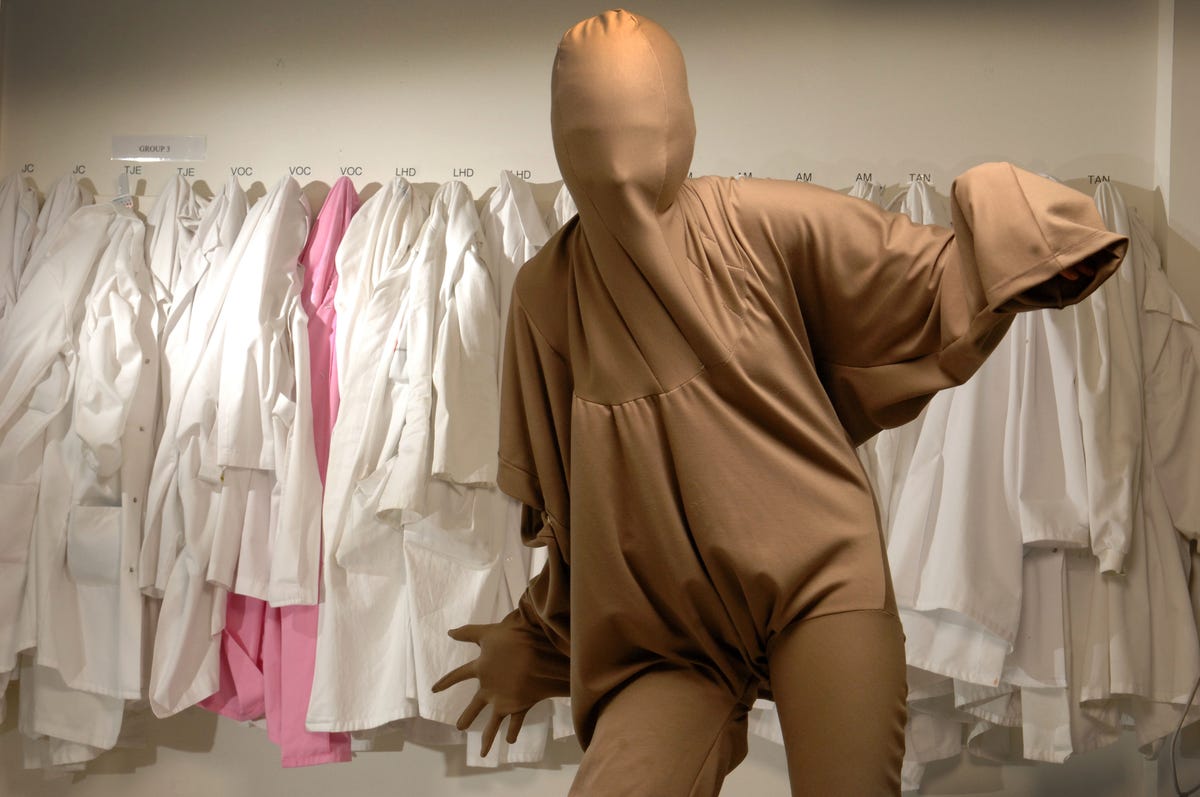Fashion tackles brain diseases (pictures)
The "Changing Minds" project tasks designers with creating garments that explain neurological conditions such as bipolar disorder and Alzheimer's -- and convey what it must feel like to live with them. The results? Strange and powerful.

Alzheimer's outfit
Does looking at this garment make you feel confused? Then it's doing its job. The strange suit by British fashion design student Chloe Ride aims to depict the disorientation a person with Alzheimer's disease must feel. One hand is trapped, and a pocket that doubles as an opening completely covers the head, making the wearer feel confused and trapped in a swirl of fabric.
Ride made the outfit for "Changing Minds," a project that challenges fashion design students from Winchester School of Art to create garments inspired by research into neurologically based conditions such as Alzheimer's, schizophrenia, and epilepsy. In its third year, the project will see student designs exhibited at the Festival of Neuroscience in London next week, hopefully spurring viewers to ponder the complexity of neuroscientific diseases in a new way.
The clothes "aim to destigmatize and demystify mental health disorders by depicting the biological basis of the disorder and/or its effects," Shmma Quraishe, a postdoctoral research fellow at the University of Southampton involved with the project, told Crave.
Some of the designs in this gallery will appear at the Barbican Centre; some have already attracted attention at other events and exhibitions.
Locked-in cocoon
Taking inspiration from the book "The Diving Bell and the Butterfly," Hannah Inskip created the cocoon-like quilted reversible jacket at left that explores what someone with Locked-in syndrome might feel like. Those who have the condition remain awake and aware but can't move or communicate verbally because of the complete paralysis of nearly all voluntary muscles in the body except for the eyes. Printed quotes from the famous book about the condition have been incorporated into the outfit.
The dress next to it, by Dayze Steward, represents people who struggle with Asperger's syndrome, an autism spectrum disorder characterized by significant difficulties in social interaction, along with restricted and repetitive patterns of behavior and focus.
"The print itself is intended to demonstrate the intricate interpretations and obsessive interests of an individual with Asperger's syndrome, therefore creating an understanding and awareness of the syndrome itself," Steward says.
Alzheimer's gaps
Vanessa Nogueira studied Alzheimer's and came up with this knitted garment full of holes. "It is the portrait of a mind filled with passion, ideas, creativity, and life, and the slow dissolution of this," she says.
The Winchester School of Art students who participate in "Changing Minds" research their chosen conditions extensively, teaming with neuroscientists from the University of Southampton, who share their research into topics such as cellular and synaptic function and dysfunction and connect the students with scientists actively working on a given topic.
Epilepsy restrictions
Free yet trapped
Stephanie Orlowski centered her stroke-themed garment around butterflies and "the idea of feeling free yet also emotionally trapped.
"The print you can see is repeated prints of stroke patients' brain scans placed in a butterfly pattern," she says.

